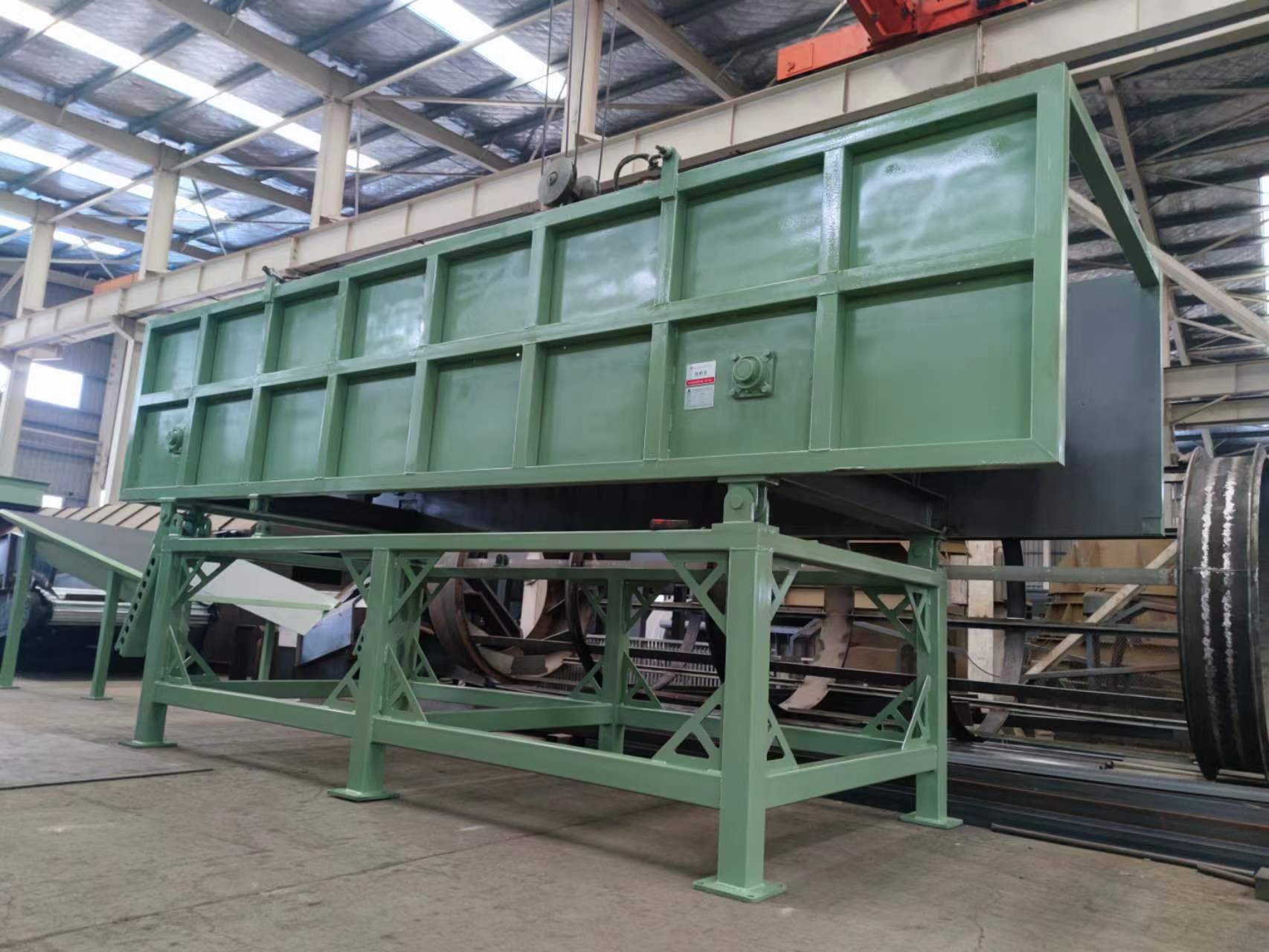Decorate the core equipment of the front end of waste screening
Date:2024-08-09
View: Point
Introduction:
The bouncing screen is designed to efficiently separate materials by size using a unique method of motion. It consists of a screen bed that vibrates vertically and horizontally, causing the material to bounce and move across the surface. This movement helps to prevent clogging and ensures high throughput and accuracy in particle separation.

Working Principle:
Material Feeding:
- The raw material is fed onto the screen at one end.
Screen Bed Movement:
- The screen bed is mounted on springs or elastic elements and is driven by a vibration mechanism.
- When activated, the screen bed performs a combination of vertical and horizontal movements.
- This causes the material to jump or bounce on the screen, facilitating its travel across the surface.
Particle Separation:
- As the material bounces, smaller particles pass through the screen mesh while larger particles continue to move along the screen surface.
- The separated products are collected at different discharge points depending on their size.
Discharge:
- The screened material is discharged from the other end of the screen or through different outlets based on size.
Key Features:
- High Efficiency:
- The bouncing action increases the probability of particles coming into contact with the screen, improving separation efficiency.
- Low Maintenance:
- Due to the simple design and the use of springs or elastic elements, maintenance requirements are relatively low.
- Versatility:
- Suitable for a wide range of materials including powders, granules, and larger solids.
- Reduced Clogging:
- The bouncing motion helps to keep the screen mesh clear, reducing the risk of clogging and ensuring consistent performance.
- Adjustable Screening Parameters:
- Users can adjust the amplitude and frequency of the screen's movement to optimize performance for specific applications.
- Energy Efficiency:
- Compared to some other types of screens, the bouncing screen may require less energy due to its efficient design.
- Easy Cleaning:
- The open design allows for easy access for cleaning and maintenance, which is particularly useful when handling materials that require frequent changes.
Bouncing screens are commonly used in industries such as food processing, pharmaceuticals, chemical production, and mineral processing, where precise and efficient particle separation is required.
Zhongcheng Machinery Will Be There Whenever Wherever Whatever You Need
You Are Welcome to : phone call, Message, Wechat, Email& Seaching us, etc.
Email:
sales@zchmachinery.com
Whatsapp/Phone:
+8618738194110
hot Products
-
 Trommel screenTrommel screen, also known as drum screens, are widely used in various industries for sorting and separating materials.Get Quote
Trommel screenTrommel screen, also known as drum screens, are widely used in various industries for sorting and separating materials.Get Quote -
 Crop straw double shaft shreddApplications:Biomass Energy Production: Shredded straw can be used as a feedstock for bioenergy plants to produce electricity or heat.Livestock Feed: Reduced-si...Get Quote
Crop straw double shaft shreddApplications:Biomass Energy Production: Shredded straw can be used as a feedstock for bioenergy plants to produce electricity or heat.Livestock Feed: Reduced-si...Get Quote -
 Zhongcheng Air Drum SeparatorAir drum separators effectively separate lightweight materials (e.g., plastics, paper) from heavier materials (e.g., metals, glass). This high efficiency is cru...Get Quote
Zhongcheng Air Drum SeparatorAir drum separators effectively separate lightweight materials (e.g., plastics, paper) from heavier materials (e.g., metals, glass). This high efficiency is cru...Get Quote
relate news
-
2024-07-09Recycling Balers-Safe,Easy-To-Use and affordableThe operating principle of a strapping machine primarily involves the following steps:1.Item Positioning:Firstly, the item to be strapped must be placed accurat...
-
2024-05-18Mobile Jaw Crusher PlantMobile jaw crushing station is a novel rock crushing equipment, also known as mobile crushing station. The purpose of its design concept is to stand from the cu...
-
2023-01-12Disc ScreenDisc screen, also known as a disc scalping screen, is a mechanical device used to separate materials based on size. It is commonly used in industries such as wa...
-
2023-01-12Impact CrusherImpact crusher is a type of machine designed to reduce large rocks, ores, and other hard materials into smaller, more manageable pieces. This equipment is widel...
-
2023-01-12Apron FeedersApron Feeder is a conveyor manufactured from steel plates driven by steel chains wearing on steel surfaces. They are a robust design manufactured for durability...



